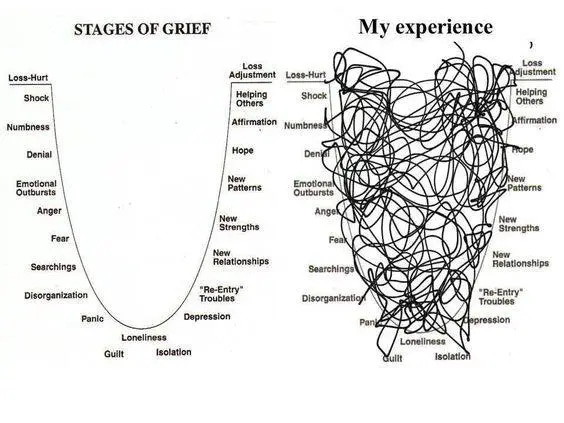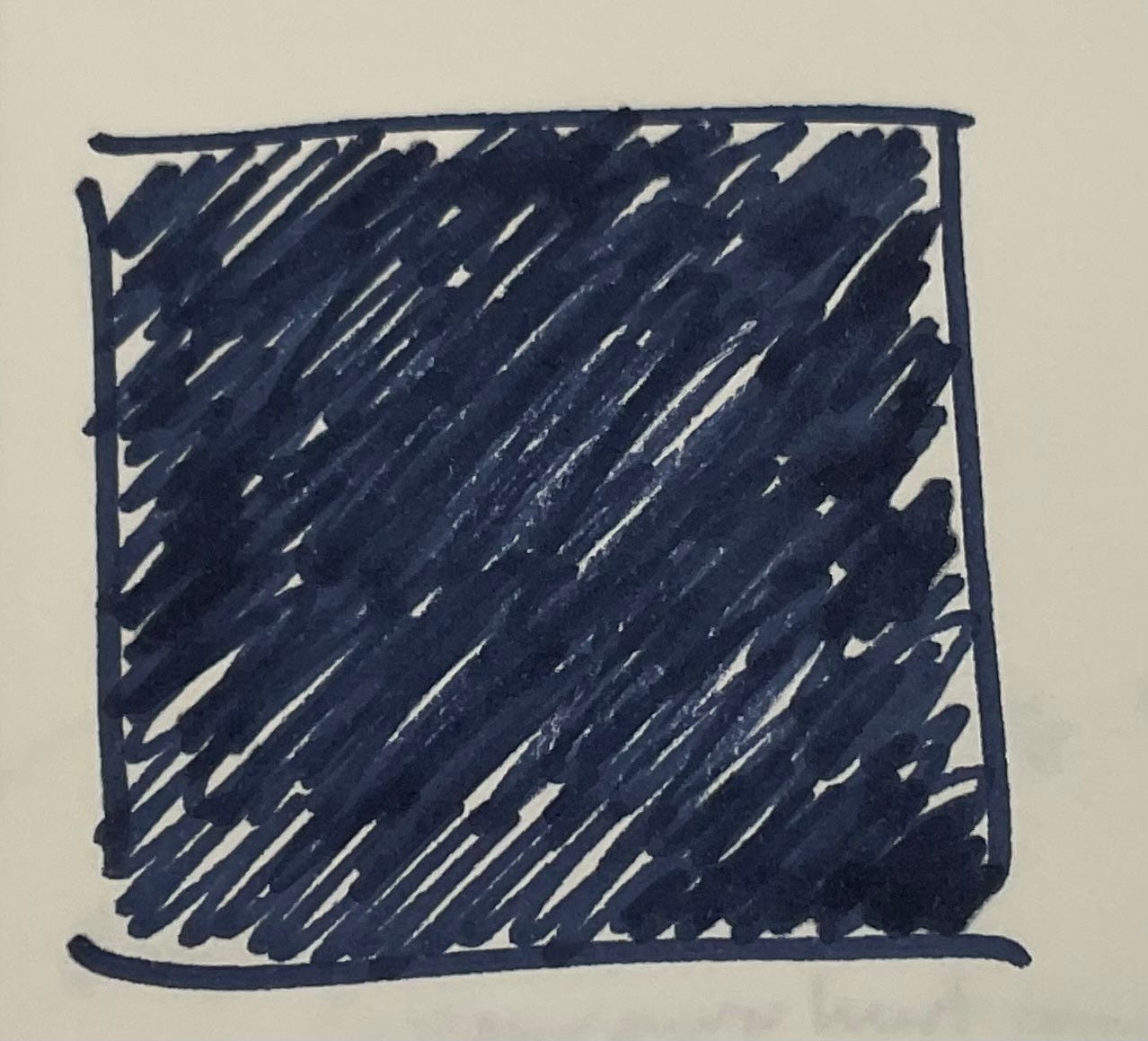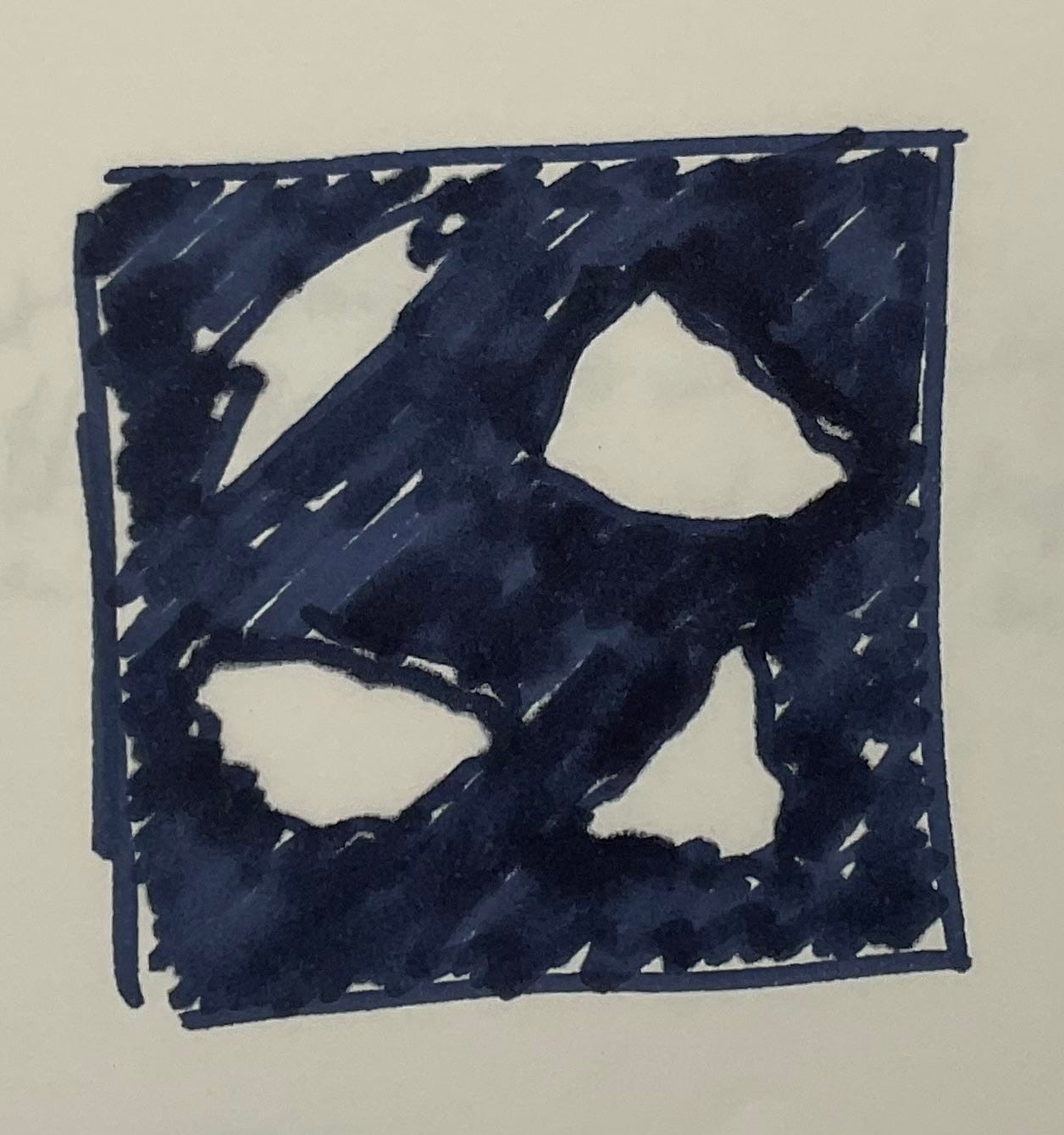#5: Demystifying the griever's mind.
How stepping into the grieving mind allows us to be with others in the midst of their human experience… and our own.
In last week’s post, we talked about mustering our courage, getting out of our own way, and finding the right words to console better.
That post was about external action. Super useful and undoubtedly important, but only one side of the story.
This week we are diving into the internal experience of someone grieving deeply.
Which, as much as we hope it were not so, will be all of us sooner or later… If we aren’t there already.
I promise I am not purposefully torturing us here, this exploration will be worth it!
By developing insights into the grieving mind, we are supercharging our empathy — both for others and ourselves.
We are learning to connect in a way that welcomes the whole self, not just the happy, shiny bits.
And we are gaining self-compassion for when it’s our turn to grieve a loss — big or small.
In going into this no-man’s land of grief, we are also taking a step toward acknowledging loss as part of the human experience…
Something we are made to move through — chaotically, miserably, incrementally, but without judgment.
Just as nature responds to forest-clearing wildfires with new-sapling growth, our minds, bodies, and hearts are made to regenerate and renew after devastation.
At our own perfect pace.
Finally, by taking a curious look into the shadows of grief, we are reminded of our innate strength.
Our innate hope. Our innate ability to connect despite the darkness and find our way back into the light together.
So stick with me for a 15-minute Saturday morning read and I promise we’ll come out the other side feeling enlightened and empowered!
So let’s dive into the griever’s mind…
Darkness… and cracks of light.
In the earliest days, here is what a griever’s mind looks like: ink black.
But over time, light spaces begin to emerge within the darkness of a griever’s mind.
If you’re currently grieving, you just keep on grieving. Let the consolers get this one.
Consolers, we get to help grow the light.
Not in a “let’s just focus on the light” kind of way, nor in a “let’s distract you from the darkness” kind of way. Rather, we are walking alongside the slow, heavy steps of our mourning companion, providing solace and bearing witness.
When I was lost in the opaque haze of grief, my friends and family grew my light in different ways:
Luanne shed tears with me, letting me be sad without judgment, and bringing enough tissues for both of us.
Julie sent me silly cards that made me smile however briefly amidst the sorrow.
Bill leaned in and listened as I fretted on repeat about how the kids would grow up without a dad.
Some of these consolations may seem at odds with each other, working in opposite directions. But they did not. These different ways shared an undercurrent.
Each person met my scattershot feelings with fervent acceptance, wide-open empathy, and “I’ve got you.”
Each made me feel safe to just be. While also modeling the sane person I hoped to transform back into some day.
This is what good consolers do in the midst of emotions they may not even understand. They listen. They respond. They abide.
Really, this is what good human beings do.
They understand every season must run its course, even during the coldest, darkest days. They don’t try to hurry it along. Rather they bundle up, make themselves comfortable, and spend time in candlelit rooms with the ones they love most, listening to smooth jazz.
They trust the subtle ways of transformation and evolution.
Which will come in handy when facing the next element of the grief process…
More emotions than we knew existed.
We are a culture of frameworks. We love to apply rules of thumb, lists, guideposts, roadmaps to our problems. If someone else has done it, maybe we can just follow their route?
So of course we try to jam something as mysterious and inexplicable as grief into a framework.
This explains the popularization of the Stages of Grief model put forth by Elizabeth Kubler-Ross in 1969, which proposed we move through grief linearly, experiencing these emotions one at a time:
Denial
Anger
Bargaining
Depression
Acceptance
But there is a rub. Dr. Kubler-Ross derived these stages from her work with terminally ill patients.
Not from those left behind when these patients died.
For decades now we have been assigning a framework to an audience that it was never intended for…
And accidentally piling on two more burdens in addition to their grief:
“I must be doing grief wrong” followed closely by “no one can understand what I’m going through, I’m so alone” when they don’t see their personal experience reflected in these classic stages.
We think we are offering a supportive scaffolding but presenting it to the wrong set of people — giving them false hope of a smooth process when it is anything but! And then leaving the griever feeling even more alone and lost and confused…
So let’s get this straight. Here is the actual, official timeline of grief:

I was given this visual four months after my husband died. It reflected my chaotic experience exactly. Upon seeing it, I felt normal… or as normal as someone going through an upending of their world can feel.
“If someone made a picture like this, then others must experience grief this way,” I thought to myself. “I’m not alone!”
My journey — because I, like every other griever who has ever existed, am a unique individual with unique context and unique circumstance — did not stay neatly within the bounds of the stages of grief.
Not only did my grieving process refuse to fit into a linear timeline, it included fifty more emotions than the official five. Anguish. Despair. Hopelessness. Loneliness. Fear. Sadness. Longing.
In other words, don’t expect some neat and tidy unfolding of grief.
Don’t have your clipboard with the stages of grief handy, so you can check off each box as you or your loved one moves from denial to acceptance.
Don’t tell the griever (whether it's you or someone else) how they should be feeling, or silently wait and wonder why they (you) are not in the next stage yet.
Better yet, drop the idea of “stages” completely! For everyone. Present company included.
Grief is not linear. (Just like love is not linear. Growing up is not linear. Pushing through limits is not linear. Accepting and surrendering is not linear.)
Grief is an individual experience and each griever's emotions will be different… At a different volume and intensity, showing up unbidden in the early days and continuously, sporadically resurfacing at times we cannot predict.
It is messy and disordered. It is the human experience. We should expect nothing less.
So why do we keep trying to fit it — fit ourselves? — into boxes?
Unless of course that box is defined by not having boundaries…
Oscillation.
In a more modern (and more fluid) grief theory from the late 1990’s, Margaret Steobe and Henk Schut proposed a very different understanding of the grief process. Their Dual Process Model states that rather than steadily working our way through stages, we oscillate.1
We pivot back and forth between dealing with the loss of the human and the loss of the life we were living with that human.
We have lost more than a person. We have lost an entire way of being.
According to the researchers, we have a “loss-orientation” when grieving our loved one, and a “restoration-orientation” when taking the steps to put our blown-up lives back together.
So what’s the takeaway for us as grievers, consolers, students of the human condition?
Sometimes grievers face their loss head on, and sometimes they need a break… which is actually the crucial work of evolving into their new life in disguise.
In the first year after Mike died — and frankly in all the years that have followed — when I could not bear my wide-ranging emotions and anxiety any longer, I would turn on the TV and watch Star Wars movies.
One after another.
For hours.
Six years later, if the kids see me watching Star Wars, they gently ask, “You ok, mom?”
I smile and say I am just looking for a break. They smile back, reassured, understanding completely.
And after I have spent some time “checked out” — resting my brain, resting my soul — I return more anchored to the present moment, rather than lost in my pain of the past or fear of the future.
It wasn’t just a break as in a rest… It was a pattern interrupt. It broke the cycle of incessant thoughts, giving me a chance to reset and restart.
Each “break” is like a tiny winter during which the processes of life seem to slow down, even stop… From the outside, we may worry that the griever is stuck, not moving forward, numbing out, lost. But inevitably winter is followed by spring.
Because winter brings spring.
So let there be winter, many winters, as many winters as you need.
Which brings us to final mysterious process of the grieving mind (that could fit into this post)…
Hope.
Hope?
When I laid out what The Luminist is about in its inaugural post, I promised to not engage in toxic positivity. So how could I be discussing hope and the grieving mind in the same space without bypassing something?
I am not going to pretend that things aren’t crushingly hard in the first days, weeks, and months after loss. In fact, I call this time the “acute phase” because you are actually in shock.
Just as if you had a terrible accident damaging your tissues and muscles and bones, you have survived a terrible blow to your mind — and to your heart. While there are no physical signs of distress (besides the anguish written all over your face), you are still experiencing shock.
And yet… maybe hope and despair aren’t mutually exclusive. Maybe they are even related.
Brené Brown in Atlas of the Heart says this about hope:
“Hope is not what most of us think it is. It’s not a warm, fuzzy emotion that fills us with a sense of possibility.
“Hope is a way of thinking — a cognitive process.
“Hope is a function of struggle — we develop hope not during the easy or comfortable times, but through adversity and discomfort.
“Hope is learned.”
As we covered above, part of grief is treading water in an uncontrollable, unpredictable sea of emotions.
Perhaps the seed of hope is planted while the mind is awash in all those other emotions.
Perhaps this allows the new bud to grow without the full weight of the rational mind bearing down on it.
Or perhaps we simply need hope. And so it finds a way.
I was desperate in the early days for some indication of how long I would feel utterly horrible. I just couldn’t live this way forever. It was impossible.
And so, it had to end.
Which, in a very backward way, shows I had the seed of hope.
Whether I willed it into existence or was able to predict the future, I somehow knew the acute pain would fade.
On the darkest days, I fixed my eyes on that horizon, returning over and over again to the knowing that it was only a matter of time. Yes, an ETA would have been nice, but sadly that’s not part of the “mystery of life and death” handbook.
So if anyone shares with you that they wonder how long it will feel like this, that is actually a sign they know it will get better.
Maybe read the moment to decide if it’s the right time to point that out to them… But at least you’ll know.
It’s hope.
Conclusion.
If we have even a slim understanding of what is roiling under the surface of a griever’s mind, we can meet them where they are with love.
(Or, if we are the one grieving, meet ourselves with love.)
We cannot “walk a mile in their shoes” because we have never been there, with their specific grief, with their specific circumstance. Even those of us who have lost cannot.
But what we can do is believe.
Not fix, not recommend, not judge.
Just believe. Believe them when they tell us what they are going through, believe them when they need to disappear into sci-fi movies, believe them when one day they say they’re seeing the light at the end of the tunnel, and the next day they say it’s gone.
The first part of believe is be. If we learn nothing else about grieving — or consoling or human-ing — if nothing else feels natural to do, just fall back on be.
Just be with your people in their time of need.
Even that is enough.
And when we are the ones that are struggling… just be with ourselves.
Trust that spring is coming. Trust the seed will sprout. Trust the process. And just be.
With love,
Sue
Learn more about the Dual Process Model here: https://whatsyourgrief.com/dual-process-model-of-grief/






